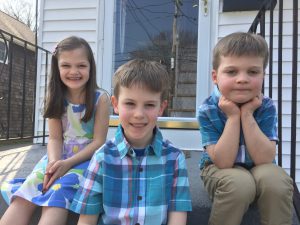Most parents will tell you about how music is engrained in many of the activities, games, and educational entertainment of early childhood. We may remember the songs of Sesame Street or School House Rock that helped us learn to count, form words, or learn history. Younger parents will remember playing Baby Mozart for their children in the crib, or how music was used in popular educational cartoons such as Sid the Science Kid. For a very long time, educators and parents have understood the value of exposure to music in the earlies stages of life, but an ever increasing amount of research supports that teaching children about music at an early age will give them an advantage as students:
- A large-scale longitudinal study published in Frontiers in Neuroscience found that structured music lessons significantly enhance children’s language-based reasoning, planning, short term memory and other cognitive abilities. Children as young as 2.5 years old were assessed for academic performance as well as various cognitive skills. It found that children who had received music lessons suggested that cognitive skills developed during music lessons influence their abilities in completely unrelated subjects, leading to improved academic performance overall.
- In 2016, the Brain and Creativity Institute at the University of Southern California conducted a study that found musical experiences in childhood can actually accelerate brain development, especially in reading skills and language development. The findings relate to how exposure to music and music instruction develops an enhanced maturity in language and reading through an increase in neuroplasticity, or the way the brain responds to its environment.
- Moving in sync to music with others helps toddlers form stronger social bonds, according to a study performed by McMaster University. The study found that toddlers, some of which were as young as 14 months old, were more likely to help an adult pick up a dropped object if they had previously bounced together in time with music as compared to those whose movement was off tempo. This exercise was designed to help infants be better in tune with emotions through sharing songs and music.
- Music improves baby brain responses to music and speech, according to scientists at University of Washington’s Learning and Brain Sciences (I-LABS), a series of musical play sessions with 9-month old babies showed an improvement in brain processing of new speech sounds. It is the first such study to suggest that recognizing rhythmic patterns in music can also help babies to detect rhythmic patterns in speech, concluding that engaging in musical experiences at an early age can have a more global effect on cognitive skills.
- Just listening is not enough. While music has been known to soothe infants and help to create a bond between caregiver and child, a study from Northwestern University revealed that simply listening to music at an older age does not have the same cognitive benefits as being actively engaged in a music class. Researchers found that children who regularly attended, as well as participated in music classes showed larger improvements in how the brain processes reading and speech than less involved children. The role of music and movement in children’s learning and growth is well documented.
The scientific evidence of the benefits of early childhood music classes is continuing to support the consensus that even from the earlies stages of life, exposure and participation in music positively influence cognitive development in children, particularly in the areas of social, speech and reading skills. As a result, these children are better prepared and perform consistently higher in school than their peers.






